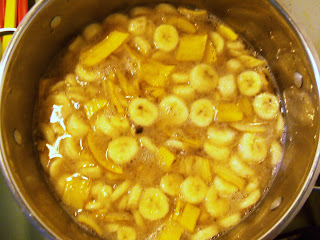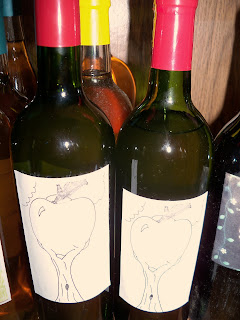
Most of the recipes on this site to date are for country wines, a very broad term that generally refers to wines made with anything other than grapes. Every fruit is different, but generally speaking, most fruits do not have the sugar content, the acidity, or the woody qualities that grapes have, and that's why we end up adding things to our country wines like sugars, tea, raisins, lemon juice, acid blend, tannins, and yeast nutrients. This certainly doesn't make these wines any less "pure" than a straight recipe of pressed grapes and yeast (in reality there are very, very few wineries that add nothing to their juices to get the perfect chemical mix).
I personally avoid using stabilizers (other than citric acid, the "lemon juice" acid) and preservatives like campden or other sulfur compounds in my wines, but that's just my choice, and I wouldn't scoff at anyone who does use them. The rest of these "additives", however, are sometimes not optional, not if you want a full-bodied, great-tasting wine.
Today, we focus on sugars.
There is a whole slew of sugars out there that can be used in your wine, and knowing what to use is not easy for a beginner. So hopefully this helps to answer, What kind of sugar should I use in my wine?. Let's do this by sugar:
Corn sugar: This is a fermentable sugar most often used to prime beer before bottling. It's generally comes ground ultra fine so that it goes into solution easily. It can also be used to raise the alcohol of a wine or beer without altering the flavor. It is a very refined sugar.
Table sugar: This is sucrose, which yeast will ferment. It is by far the cheapest sugar for making wine, and can also be added to your wine or beer to boost the alcohol content without altering the taste.
Brown sugar: Brown sugar will, of course, also boost your alcohol content, but it will also change the taste of your wine. During fermentation and aging the brown sugar (which has some of the molasses left on it, as it is less refined than table sugar) imparts caramel aromas and flavors to the wine. Thus, you wouldn't want to use this with peach wine or a grape wine, but it makes for a very warming and cheery apple cider, and can even add nice complexities to a mead or beer.
Molasses: Molasses should probably be avoided. It will greatly affect the taste of your wine, and often not for the better. While it may bring some notes of caramel out, molasses is full of impurities from refining table sugar, and those impurities can lead to off odors and flavors in your wine.
Honey: If you've tried mead, you know the flavor that fermented honey imparts, and it can be very nice and refreshing, but it is a flavor all its own. Honey compliments many beers and fruits, and when used with fruit juice, a wine called melomel.
Malt extract: This is dried malt extract, and is often used in beers, but can on occasion add a grainy base to fruit wines if desired. Its use as such is not especially common.
Turbinado sugar: This is a washed brown sugar, leaving a little molasses, but not much. It imparts nice caramel hints, without overpowering the flavor of your wine, an excellent choice for sugar.
This list is by no means extensive, but it should be more than enough information to get the beginner or intermediate home wine-maker an idea of what kind of sugars to use in their country wines. Until next time...
The Winemaker
 Recipe:
Recipe:















































